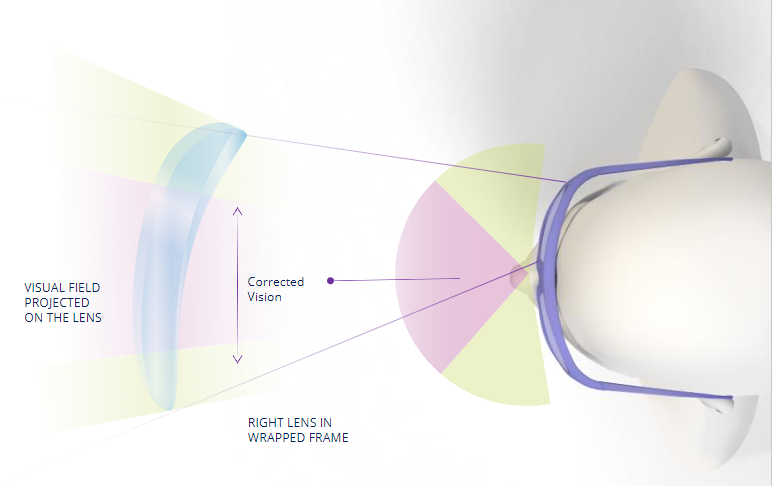INTRODUCTION
Over the past thirty years, the most crucial factor in the evolution of frame design has been the progressive increase in the use of glasses beyond corrective purposes, taking on a prominent role as an expression of one’s image and personality. Frames are now accepted as more than just a solution for visual defects; they serve as a decorative element, reflecting social status or complementing personal style.
Today, a frame is not only expected to fulfill functional and technical aspects, such as supporting lenses, but its design and fashion perspective are increasingly significant. This is why there is a growing variety of frames to meet diverse preferences.
When selecting a frame, two essential factors must be considered: firstly, the frame should provide optimal and relaxed vision; secondly, it has a design component directly related to aesthetics. Moreover, the evolution of frames and fashion trends create a demand for lenses that align with these trends.
However, not all prescription lenses are suitable for all frames. Often, the desired frame and the required prescription lenses are incompatible. Specifically, wraparound frames and curved lenses often encounter challenges in accommodating prescription lenses.
Wrap frames have specific requirements for lenses to adapt to them:
- They require a large lens surface, which increases the risk of blurred vision in the peripheral visual field.

Image 1: How wraparound affects visual acuity in the visual field.
- They need high bases (due to the frame’s wraparound shape and the steep angle formed between the two lenses): a wraparound frame requires a base of 6 to 8, regardless of the lens prescription, while a classic frame requires a base of 4 or 5. The angle between the lenses causes optical axis decentration, necessitating correction prisms.
- They impose a limitation on the power range compared to lenses for non-wraparound frames due to increased edge thickness in strong negative lenses and center thickness in strong positive lenses. This effect is also related to the exceptionally large size of the lenses.
Horizons Optical introduces CURVEDstyle, the optimal visual solution for users of prescription lenses desiring a curved frame for all-day use.
CURVEDstyle offers:
- Optimized peripheral vision:
Dynamic activities, such as outdoor and recreational activities, as well as sports, demand a higher level of visual attention and a quick, precise, and effective response to stimuli.
CURVEDstyle considers the visual needs for dynamic vision, ensuring optimal power at every point of the lens. Additionally, it can compensate for oblique astigmatism and refractive errors caused by the high wraparound angle. Finally, it guarantees a 120º binocular visual field, ensuring image fusion and better visual coordination.
- Thinner lenses:
Wraparound frames typically have larger calibers, negatively impacting lens thickness. However, CURVEDstyle utilizes the temporal part of the lens to enhance the aesthetics of the resulting lens. The nasal part is critical and preserved to ensure user convergence.

3. Extended range options
CURVEDstyle provides the flexibility to choose wraparound frames regardless of the user’s prescription. This allows users with high prescriptions to engage in dynamic activities using curved frames, enjoying greater comfort due to the lightweight lenses.
CONCLUSION
CURVEDstyle enhances visual acuity, especially for dynamic vision, and also for static vision, thereby improving the user’s visual performance.
RECOMMENDATIONS
Optometrists play a crucial role in analyzing the visual capabilities of users with wraparound frames. This analysis is particularly relevant for users engaged in dynamic activities. In cases requiring dynamic vision, the refractive state in distance vision, refractive state in near vision, binocular vision, and accommodative state are of utmost importance. Additionally, the prescription of wraparound lenses requires greater precision in measurements, as well as in subsequent adjustments and assembly. Mounting centers and usage position parameters form the basis for calculating prismatic compensation and recalculating the power in high-base curved lenses.
REFERENCES
Scheiman, M., & Wick, B. (2020). Clinical management of binocular vision. Philadelphia.


